Getting through the storm: how to prepare a ship and crew (7 photos)
When the clouds gather over the ocean and the barometer drops sharply, experienced sailors know it's time to prepare for the test. Stormy weather requires not only courage, but also careful preparation, which begins long before going out to sea. 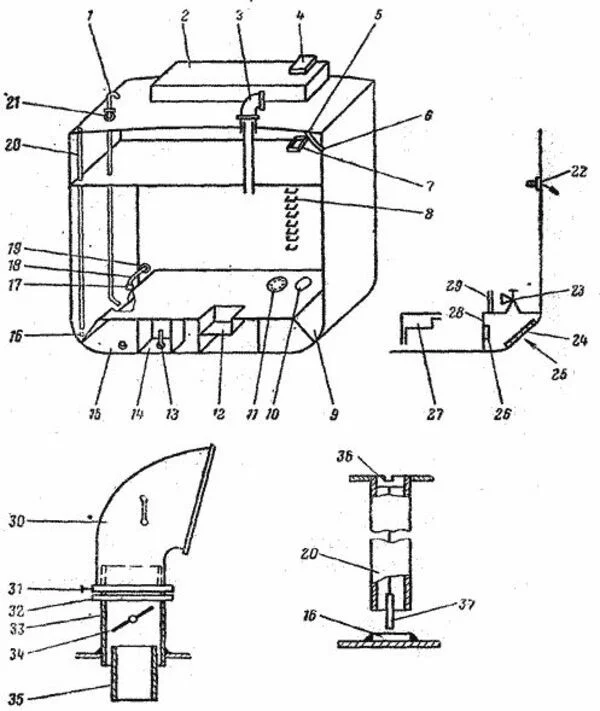
The design of the hold with bilges (marked on the diagram under number 9)
Preparing for a storm: check and secure everything
While still at the pier, the captain and his crew conduct a thorough check of the entire vessel. The first thing they do is inspect the hull to see if there is any damage that could get worse in a storm. Particular attention is paid to the cargo holds: they check the bilges (special recesses for collecting water) and the receiving nets to make sure that if water gets into the hold, it can be quickly pumped out.
The cargo is placed with special care. Each box, each container must be securely fastened. Shifting cargo in a storm can lead to a dangerous list or even capsizing of the ship. 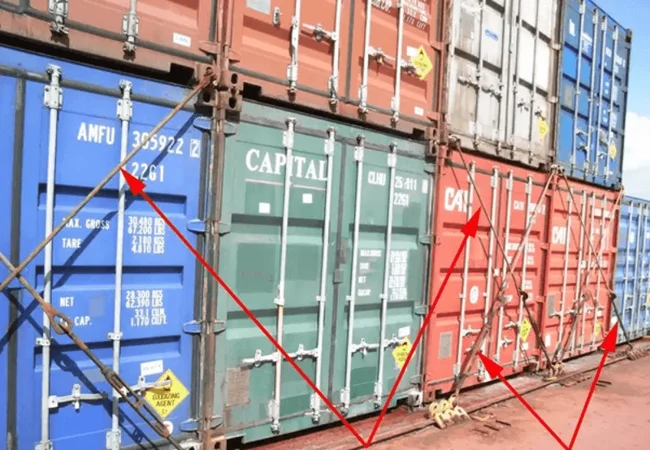
Example of the scheme for securing lower level containers
Tanks are either completely filled or left empty - this prevents the formation of a free liquid surface inside, which can lead to a loss of stability of the vessel. All hatches, necks and doors are checked for leaks - one unclosed lid can be a fatal mistake.
When the vessel is already at sea, and the forecast warns of approaching bad weather, the crew proceeds to emergency measures. On deck, the team checks the fastening of everything that can be torn off by the wind: antennas, lifeboats, equipment. Even small things like tools in the pantries and dishes in the galley are additionally secured - in a storm, any unsecured object becomes a dangerous projectile. 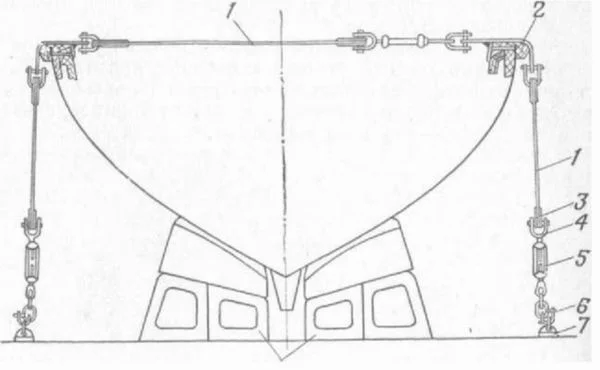
Cruising boat fastening
Anchor chains are securely locked, and hawse holes are covered with lids to prevent waves from flooding the chain lockers. All doors and portholes leading to the open deck are hermetically sealed. Ventilation deflectors are covered with canvas covers, unfolding them in the wind to reduce water ingress.
Special attention is paid to the drainage systems. All pumps are checked, bilge wells are cleaned - in a storm, the pumping system can be the last hope if water starts to flow inside. Storm rails are stretched across the deck - strong ropes that can be held on while moving around the deck. 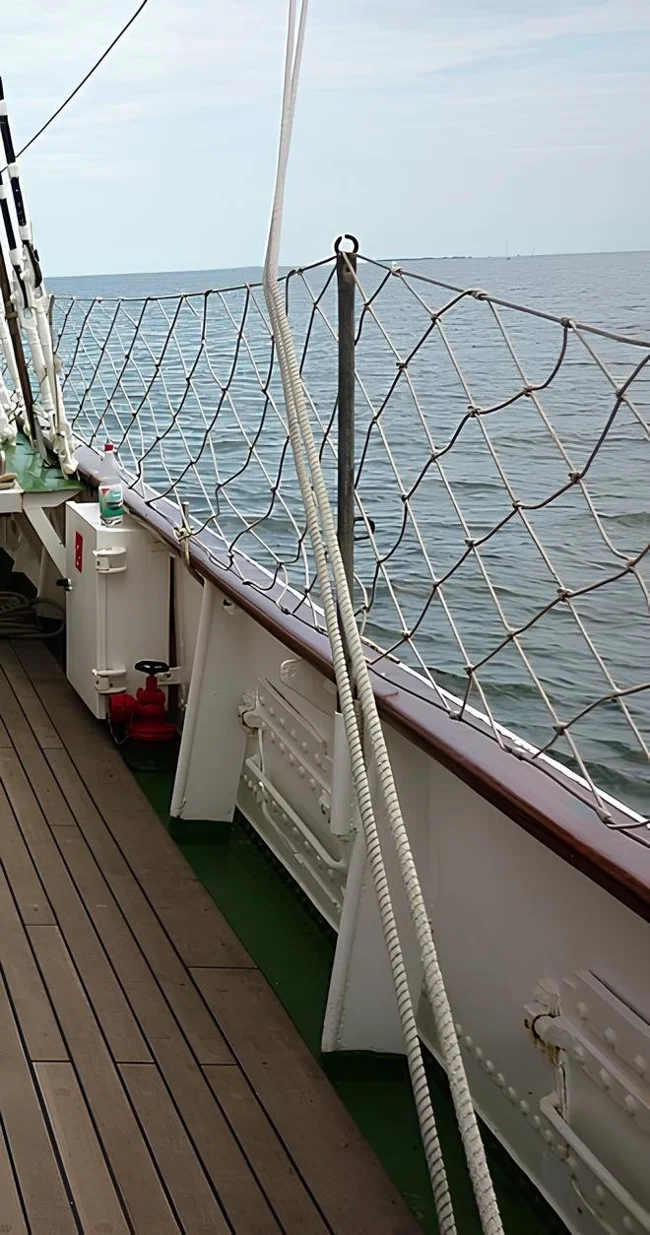
A rail device of a brigantine, installed on the bulwark to protect the crew from falling overboard
Storm navigation: a course for survival
Even before the wind reaches hurricane force, the captain studies maps and forecasts, choosing the best route. If it is possible to bypass the storm zone, they change course. When avoidance is impossible, they prepare to meet the elements.
Navigators constantly monitor weather maps, receiving forecasts from coastal stations. They know: in a storm, the main thing is to prevent resonant pitching. To do this, they carefully calculate the speed and course, using special storm diagrams. Sometimes it is enough to slightly change the speed or adjust the course by a few degrees to avoid the risk of the vessel capsizing. 
Example of a storm diagram
When a storm hits: actions of the crew
At the height of bad weather, all crew members are in their places. The engine room is working in an enhanced mode - mechanics ensure that the engine does not fail under load. The helmsmen keep the ship on course. On the bridge, the captain and navigators analyze the situation, being ready to change tactics at any moment.
In the living quarters, sailors secure everything that can fall. On small and sailing ships, bunks often have special storm belts to prevent sleepers from being thrown onto the floor during heavy pitching. Cooking in the galley is stopped - a hot stove becomes dangerous in a storm. 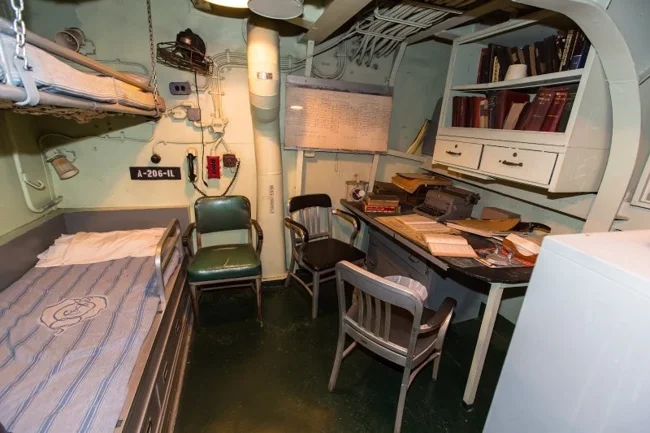
A ship's living quarters
After the storm: checking the aftermath
When the wind dies down and the waves calm down, the work doesn't stop. The crew conducts a thorough inspection of the ship and its cargo for damage. Particular attention is paid to the steering gear and engine: their condition determines whether the ship will be able to continue its voyage.
Experienced captains say that no storm passes without leaving a trace. But thanks to proper preparation and coordinated actions of the crew, even the fiercest storm becomes just a test that makes sailors and their ships even stronger. After all, the sea does not forgive mistakes, but respects those who approach the matter with all seriousness.





























